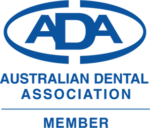“Wisdom teeth candy” or “candy after wisdom tooth extraction” is an attractive topic, especially for those recuperating after wisdom tooth extraction at the dental clinic. This article will go over the best sweets to consume after having your wisdom teeth out, as well as how to do so safely and properly.
Wisdom Teeth Removal And Recovery Overview


Wisdom teeth, often called missing teeth or number 8 teeth, cause several oral health issues. It typically doesn’t have enough room to grow in the jaw, causing pain and discomfort. Therefore, wisdom teeth extraction and restoration have become significant in dentistry to treat these concerns. We’ll discuss wisdom teeth extraction’s dangers, symptoms, and recuperation in this section. Wisdom teeth repair will also be discussed to restore a confident and comfortable smile in daily life: The following is a typical wisdom teeth extraction and restoration procedure.
- Before taking out wisdom teeth, the dentist will look at the mouth, take X-rays, and decide if they need to be taken out or not.
- Tooth extraction: Usually under local or general anesthesia. The dentist will cut gums, extract teeth from jawbone, and remove wisdom teeth. The procedure takes 30-60 minutes.
- After extraction: Minor bleeding may occur. Bite gauze on the extraction site for 30 minutes to halt bleeding. Extraction may cause swelling and discomfort for 1-3 days.
After-Care Procedures After Wisdom Teeth Extraction
We’ll look at effective ways to restore your smile and health following wisdom teeth extraction, such as prosthetic choices and post-operative care:
- If you need to, take painkillers.
- After 24 hours, rinse your mouth with warm salt water.
- For the first two or three days, eat oatmeal and soft soup.
- Don’t brush the area where the tooth was pulled for the first 24 hours.
Wisdom Teeth Candy? When Can You Eat Candy After Wisdom Teeth Removal?


After wisdom teeth removal, most confectionery is safe. But you should stay away from candies that are sticky or hard to chew. Sticky candy can get caught in the wound as it heals, and hard candy can cause pain and damage to the surgery site. In general, you should avoid eating foods that are hard to chew or have a lot of sugar. These foods might hurt after wisdom teeth removal.
Timing For Candy Following Wisdom Teeth Extraction
The time it takes for the incision to heal after having a wisdom tooth extracted might affect how soon the patient can resume eating sugar.
During the first 24 hours after tooth extraction: Don’t consume any sweets at all. Avoid firm, sticky foods that might harm or infect the tooth extraction site.
After 24 hours: You may consume sugar-free gum and gelatin candy, which are soft and non-sticky sweets. However, avoid hard, sticky sweets.
3-5 days after tooth extraction: When the cut starts to heal, you can eat some soft candy, but you should still avoid sugary, sticky, or hard candy.
After 7-10 days: You may resume regular sweets eating after the wound has healed fully. However, you should still be cautious while chewing to prevent injuring the tooth extraction site. Do not consume confectionery too soon after having a tooth extracted; doing so increases the risk of problems and slows the healing process.
Candy Dangers and Issues
Eating candy after getting your wisdom teeth out can cause a lot of problems and risks during your healing. Wisdom teeth are often pulled because there is insufficient room for them to develop or because they are creating difficulties with dental health. When wisdom teeth are pulled, this area becomes very sensitive and fragile. Candy, particularly hard candy, may cause several issues.
First, hard sweets might traumatize the surgery, producing bleeding. This bleeding raises infection risk and surgical pain.
Second, eating sugar after wisdom teeth extraction might introduce germs into the surgical region, causing infection. This may need antibiotics and slow healing.
Third, sweets and hard candies may exacerbate surgical discomfort and edema, reducing recovery and increasing complications.
Finally, sugar may make you disobey dentist-prescribed post-op limitations. Loss of therapy might make recovery harder.
What Candy To Eat And Avoid After Wisdom Teeth Removal?
Choosing the correct candies after wisdom teeth extraction is critical to ensuring that the healing process is not hampered and that the surgical region is not harmed. Here are some examples of sweets to eat and candy to avoid:
Types of candy to eat
After getting your wisdom teeth out, you can eat soft candies like sugar-free gum, soft jelly candies, or softballs. They don’t put any pressure on the teeth or the place where the surgery was done.
Also, eating soft gummy candies carefully and without biting down may help minimize strain on the surgery region.
Chocolate candy containing nuts is not recommended after surgery, however soft chocolate is easy to eat.
Avoid These Candy
After having your wisdom teeth out, it’s best to avoid certain sweets to ensure your mouth heals properly.
One of the strongest candies is hard candy. Hard sweets like candy balls, caramels, and lollipops may damage teeth and cause cracks, breaks, or seal loss. Also, you should stay away from hard marshmallows like hard marshmallows or hard gummy sweets. They attach to teeth and foster tooth decay germs.
In the same vein, sweets with a lot of heat should be avoided. They frequently include acids and carbohydrates that erode tooth enamel and cause decay. If you bite down on sweets with nuts like pralines, they might harm your enamel. Marshmallows have the potential to cling to teeth and provide a breeding ground for germs that may lead to tooth decay. Some brightly colored sweets include chemicals that damage tooth enamel. Finally, dry treats like cookies may remain on teeth and enable cavity-causing germs to attack.
Tips For Eating Candy Safely After Wisdom Teeth Removal


Enjoying sugar after having your wisdom teeth out is possible, but there are a few precautions you should take.
First, choose soft sweets like sugar-free gum, jelly candy, or ball candy. If you can’t avoid hard marshmallows or gummy candy, bite lightly to prevent stressing your teeth and surgery.
To eliminate sugar and candy residue from teeth and gums, rinse your mouth after eating sweets. You may brush your teeth after eating sweets but do so carefully to avoid damaging the surgery site.
Limit daytime sweets consumption and follow your dentist’s post-operative diet advice. Your doctor will provide you with particular candy and dental health advice following wisdom teeth removal. These precautions will help the recuperation process go smoothly and avoid future surgical or tooth damage.
Food Advice From A Dentist After Wisdom Tooth Extraction
Do you wonder what can you eat after wisdom teeth removal? Following wisdom teeth extraction, the dentist provided specific dietary recommendations to help the incision heal fast and prevent infection.
Dentists recommend sticking to soft meals like oatmeal and soup for the first 24 hours after having a tooth out.
After that, you may start eating softer foods, but you should still stay away from anything too harsh, crunchy, or sticky. Avoid the removed region and chew with the remaining teeth.
When the incision heals 3-5 days following tooth extraction, you may consume soft foods but not sugary or sticky ones.
After 7-10 days, the wound heals and you may eat normally.
List of Foods You Can Eat Right Away After a Dental Procedure
To avoid stressing the surgical site after a dental procedure or wisdom teeth extraction, nutrition is crucial. The following meals are safe and simple to eat after dental procedures:
- Tofu, barley, and tomato soups are wonderful. They nourish without stressing teeth and surgery.
- Soft and easy-to-eat rice or powdered porridge provides nourishment.
- Without puree, gently steamed vegetables or meat may supplement your diet.
- Rice and soft noodles are excellent, but limit quantities to minimize surgical pressure.
- Natural, grain-free fruit juices hydrate well.
- Soft, seedless bread may be chilled or soaked to make it easier to consume.
- You may eat cabbage, eggplant, and soft-boiled tomatoes.
Sweets Option
When eating sweets after getting a tooth pulled, you need to be careful not to hurt the surgery site or put too much pressure on the tooth or the soft tissue around it. However, there are soft, easy-to-eat sweets following a tooth extraction.
- Yogurt is tasty and high in calcium, which protects teeth and bones.
- You can eat pudding that has a soft texture and is easy to swallow.
- Fresh cream’s softness is very appealing.
- Orange, apple, and pomegranate drinks deliver vitamin C and hydration.
- Soft and silky flan is excellent.
- Without pressuring the surgery site, soft or hazelnut chocolate might alleviate sweet cravings.
Conclusion


It’s crucial to take good care of the extraction site and follow the dentist’s advice throughout recovery after a wisdom teeth extraction at Spring Orchid Dental Clinic. One factor is sweets eating following wisdom teeth extraction. While enjoying a sweet treat after a tough workout may be rewarding, it’s important to remember that eating too much or the wrong kind of sweets might slow down the healing process. Soft sweets like sugar-free gum, jelly candies, and balls are excellent. Bites should be gentle to prevent stressing the teeth and surgery. Care after wisdom teeth extraction includes rinsing your mouth after eating sweets to eliminate sugar and confectionery residue. Choose sweets and follow post-operative dietary guidelines to enjoy sweet snacks without damaging the surgery and teeth.
After wisdom teeth extraction, Spring Orchid Dental Clinic will assist and advise you through the procedure. Follow the recommendations to recuperate smoothly after wisdom teeth extraction.
FAQs
Can You Eat Lollipop After Wisdom Teeth?
Yes, you can. If you follow a few restrictions, eating lollipops after wisdom teeth removal may be a possibility.
Choose a soft, non-hard lollipop to protect your teeth and surgery region. Soft lollipops are simple to eat and put less strain on teeth and surgery. Bite lollipops lightly to prevent pressing on the surgery site.
If needed, cut the candy into little pieces for easy eating. To eliminate sugar and candy residue from teeth and gums, rinse your mouth with water after eating sweets. Brushing your teeth after eating a lollipop is OK, but be careful not to damage the surgery. Avoid eating too many lollipops and candies throughout the day. This reduces sugar and protects your teeth.
Finally, follow your dentist’s diet and post-op advice.
How Do You Treat Tooth Extraction Pain After Eating Candy?
Stop consuming sweets if you have your wisdom teeth out and are experiencing discomfort. To ensure your recuperation is safe, you must quit consuming sugar and take care of yourself.
Begin by rinsing your mouth with warm water to remove any residual sweets and cleaning the region where the procedure will be performed. If eating candies or hard foods hurts or makes you feel awful, stop. This might imply that the region where surgery was performed needs time to recover and should not be rubbed or agitated excessively.
Rest is essential, and you should avoid activities that create pressure on the region where the procedure was performed. If your doctor prescribes pain relievers, you should take them exactly as prescribed. If the pain continues or there are signs of infection, edema, or other serious health problems, contact your dentist.
What If Candy Gets Caught In The Wisdom Teeth Extraction Site?
If sweets is stuck to your wisdom teeth extraction site, take these steps:
- First, avoid using your tongue or harsh items to remove the sweets, which might harm the surgery. Try washing your mouth with warm water first. Tilt your head down and apply water, then gently release it to remove the candy.
- If the candy remains sticky after rinsing, use gentle dental floss to remove it. Only use a delicate thread and do this slowly to avoid harm.
- If you cannot remove the gum or there is inflammation, edema, or significant discomfort, see a dentist immediately. The doctor will examine the surgery site and provide treatment recommendations.





